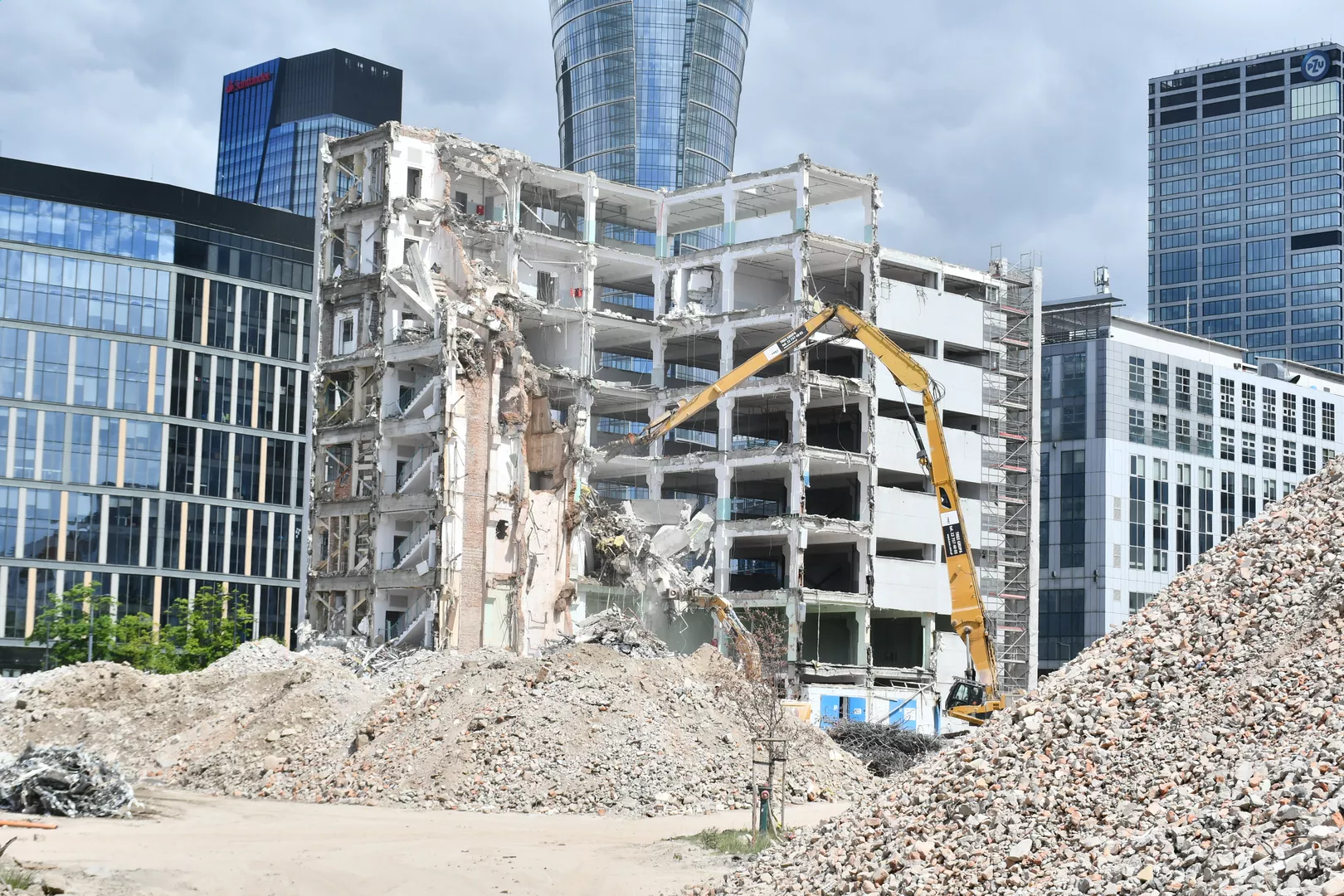
How to Develop a Comprehensive Building Demolition Plan Using BIM Technology 2025
Discover revolutionary approach to demolition planning using BIM technology. Guide shows how Building Information Modeling increases efficiency, reduces costs and minimizes errors in demolition projects.
BIM (Building Information Modeling) technology in 2025 has become the standard in demolition project planning, revolutionizing the approach to building demolitions. Building information modeling offers unprecedented possibilities for analysis, simulation, and optimization of demolition processes.
What is BIM in the context of building demolition?
BIM is an intelligent, three-dimensional digital model that contains not only building geometry but also all relevant information about materials, construction, installations, and processes. For demolition projects, BIM enables:
- Accurate inventory of building materials
- Planning demolition work sequences
- Estimation of waste quantities and types
- Identification of materials suitable for recycling
- Simulation of various demolition scenarios
Benefits of using BIM in demolition planning
Cost and error reduction
According to the latest 2025 research, using BIM in demolition projects reduces costs by 15-25% compared to traditional planning methods. The technology eliminates errors resulting from imprecise measurements and incomplete documentation.
Waste management optimization
BIM enables precise prediction of types and quantities of waste generated during demolition. The system automatically segregates materials into:
- Materials suitable for reuse
- Secondary raw materials for recycling
- Waste requiring special handling (e.g., asbestos)
- Waste directed to landfills
Safety management
The BIM model contains information about potential hazards, such as:
- Location of hazardous materials
- Structural elements requiring special caution
- Optimal evacuation and emergency service access routes
- Work sequence minimizing risk
Process of creating a demolition plan in BIM
Step 1: Digital building inventory
We start by creating a detailed 3D model of the existing building. In 2025, we use:
- 3D laser scanners for precise measurements
- Drones equipped with thermal cameras
- Photogrammetry for facade documentation
- Ground-penetrating radar to identify hidden installations
Step 2: Parametrization of structural elements
Each building element receives parameters defining:
- Material type and properties
- Connection method with other elements
- Dismantling difficulty (1-5 scale)
- Recycling potential
- Economic value of secondary material
Step 3: Demolition sequence modeling
BIM allows simulation of various demolition scenarios:
- Selective demolition with maximum material recovery
- Mechanical demolition focusing on speed
- Mixed demolition optimizing time and costs
Step 4: Environmental impact analysis
The model considers:
- Noise and vibration propagation
- Dust and pollution emissions
- Traffic impact
- Effect on neighboring buildings
BIM tools dedicated to demolition in 2025
Autodesk Revit with Demolition Planning module
Leading BIM software has been enhanced with special demolition planning tools, enabling:
- Automatic waste quantity calculations
- Time simulations of demolition process
- Integration with recycler databases
ArchiCAD Demolition Suite
Comprehensive solution offering:
- Deconstructability analysis
- Waste transport route optimization
- Demolition cost calculators
Bentley MicroStation with Waste Management module
Advanced tools for:
- Waste flow modeling
- Material lifecycle analysis
- Demolition site logistics optimization
Integration with waste management systems
BIM in 2025 directly connects with:
- Waste Database (BDO) in Poland
- GPS waste transport tracking systems
- Secondary material trading platforms
- Mobile applications for demolition managers
Legal requirements and BIM
New 2025 regulations require demolition projects for buildings over 1000 m² to obligatorily use BIM technology for:
- Demolition process documentation
- Waste management reporting
- Environmental impact monitoring
Challenges and limitations
Implementation costs
BIM software licenses cost from 8,000 to 25,000 PLN annually, and team training requires investment of 15,000-30,000 PLN per person.
Hardware requirements
BIM workstations require:
- Intel i7 or AMD Ryzen 7 processor minimum
- 32 GB RAM (64 GB recommended)
- Dedicated graphics card with 8 GB VRAM
- SSD drive with minimum 1 TB capacity
Team competencies
Effective BIM utilization requires interdisciplinary team including:
- Certified BIM engineer
- Waste management specialist
- Demolition designer
- Safety coordinator
Future of BIM in demolition
Artificial Intelligence
By 2026, AI integration with BIM is expected, enabling:
- Automatic demolition sequence optimization
- Predictive risk analysis
- Self-learning waste management algorithms
Augmented Reality (AR)
Machine operators will use AR glasses displaying:
- Real-time demolition instructions
- Hazardous material warnings
- Optimal grip points for excavators
Internet of Things (IoT)
Sensors on demolition sites will monitor:
- Noise and vibration levels
- Air quality
- Real-time work progress
- Machine fuel consumption
Case study: Office complex demolition in Warsaw
Tree Group applied BIM technology to plan demolition of a 15-story office building with 12,000 m² surface area. Results:
- 23% reduction in demolition time
- 78% material recovery for recycling
- Cost savings: 340,000 PLN
- Zero workplace accidents
- Dust emissions 45% below standards
Summary
BIM technology represents the future of demolition project planning. Investment in this technology pays back on average after 3-4 projects, and benefits include not only economic but also environmental and social aspects. Companies not using BIM will be gradually displaced from the market by competition offering higher planning and execution standards.
In 2025, BIM ceased to be an option - it became a necessity for companies aiming for market leadership in demolition services.
Autodesk (2025). "BIM Benefits Report 2025: Construction Industry Transformation". Autodesk Research Division.
European Commission (2025). "Circular Economy in Construction: BIM Applications for Waste Reduction". EU Publications Office.
ISO 19650-2:2024. "Organization and digitization of information about buildings and civil engineering works, including building information modelling (BIM)".
Ministerstwo Rozwoju i Technologii (2025). "Strategia wdrażania BIM w Polsce 2025-2030". Warszawa: MRiT.
National Institute of Building Sciences (2025). "BIM for Demolition and Deconstruction: Best Practices Guide". NIBS Press.
Polski Komitet Normalizacyjny (2025). "PN-EN ISO 14040:2025 Zarządzanie środowiskowe - Ocena cyklu życia w BIM". PKN.
Research Gate Publications (2025). "BIM-based Tools for Construction and Demolition Waste Management: 2025 Update". International Journal of Sustainable Construction.
buildingSMART International (2025). "IFC 5.0 Standard for Demolition Information Exchange". BSI Technical Report.
Tree Group Sp. z o.o. (2025). "Studium przypadku: Kompleks biurowy Warszawa - analiza efektywności BIM". Raport wewnętrzny.
United Nations Environment Programme (2025). "Global Status Report on Building Demolition and Material Recovery". UNEP Publications.
Tags
Share this guide
About the author
dr inż. Paweł Kowalski
Demolition Planning Department Specialist
Category
Project Planning
Reading time
12 minutes
Publication date
May 26, 2025
Similar guides

Effective Planning of Construction and Demolition Projects - Comprehensive Guide
A comprehensive guide to methodologies and best practices for planning construction and demolition projects. Learn how t...

Legal Documentation and Demolition Permits - Complete Guide 2025
Complete guide to legal procedures and documentation required for demolition permits in 2025. Learn current requirements...